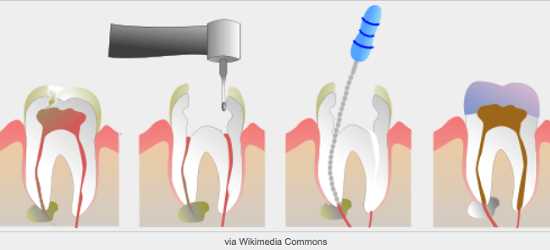Root treatment in Munich by specialists

In our dental practice in Munich, patients are treated according to the guidelines of the German Society of Endodontics (DGET). Root canal treatment (endodontics) is the only way to return to everyday life with severe toothaches, which can occur quite often. The pain of a root disease plagues patients very much – a quick visit to the dentist and a rapid treatment of the disease is the top priority.
Do you have a throbbing toothache? Your teeth have long been extremely sensitive to heat or cold? Dentists Nymphenburg help you. An examination in our dental practice in Munich provides information about whether a root canal treatment is necessary. In our practice, you will be quickly treated even in an emergency and receive a detailed diagnosis and timely and predictable appointments for root canal treatment / root canal treatment. Dentist Vesna Jambrovic, Certified Endodontic Specialist, is at your disposal to help you find a dental root canal treatment for patients in the Munich area.
Finally painless: endodontics / tooth root treatment
Due to diseases or accidents, a tooth root canal treatment may be necessary. It is always an attempt to get a tooth and thus not have to remove it. The long-term success of such a treatment depends largely on the quality and effort with which it is performed. Thus, in many cases and with the help of special materials and devices, long-term tooth preservation can be achieved.
Causes of inflammation of the tooth nerve
Potential causes of inflammation of the dental nerve (pulpitis) may be advanced caries, leaking or defective fillings, physical or chemical stimuli. The symptoms of inflammation can be either acute or chronic. In chronic pulpitis, the patient often does not notice for a long time that the tooth nerve is dying or already dead. Only when the dead pulp is inflamed, the patient has pain. In acute inflammation, however, the patient currently has (severe!) Pain.
If a tooth presents problems to the patient due to irreversible damage to the nerve, it is necessary to remove the nerve, as leaving the inflamed pulp may cause pain and damage the surrounding bone.
Optimal treatment results
In order to ensure optimal treatment results, we use an OR microscope and special, highly flexible, mechanically operated root canal instruments for the detection and preparation of additional root canals and branched root canal structures in our root canal preparation practice. We also use special disinfecting rinses, rubber dam (absolute draining) and modern, high-quality materials for root filling.
The final stabilizing treatment of the treated tooth also contributes to the success of the treatment.
Sequence of a root canal treatment
Root canal treatment proceeds in several steps and over several sessions.
- The first step is an accurate clinical and radiographic report. Thereafter, if necessary, the patient is given an anesthetic syringe and, as a rule, a rubber dam is placed together with a clamp suitable for the tooth. If necessary, caries is removed and, if necessary, a body pack is placed.
- In the next step, an access cavity is placed so as to have direct access to the root canal system. Now it is possible to check whether the found channels are continuous and thus a preparation of the root canals can take place.
- With the help of an endometry device, the length of the root canal or root canals for multi-root teeth is determined very precisely. This can be dispensed with in most cases on an X-ray. Subsequently, with the system used in our practice, the canal is machined to the desired length to ensure removal of the infected tissue. The files are made of a nickel-titanium alloy and are characterized by their high flexibility and stability. In this way, can root canals safely and efficiently rid of the diseased tissue and formed the channel for a subsequent root canal filling.
- In addition, special rinse solutions are used during the treatment, which have a strong germicidal effect and are even effective against certain problem germs.
- After completion of the treatment, the channel (s) is dried and a drug insert is placed in the tooth to kill any remaining germs. As a last step, the tooth is temporarily closed.
Depending on the severity of the previously existing inflammation, the drug change is repeated several times until the root canal is then free of inflammation and germs.
If you have any questions, we are happy to assist you in our practice as a dentist in Munich!
Related Posts
-

Endodontics frankfurt: root canal treatment for root inflammation
Root canal treatment – endodontics (root canal treatment) Successful and painless treatment of tooth root inflammation with laser at dentist P. Tomovic…
-

Root canal treatment Hanover, dr
root canal treatment Root treatment in Hannover Mitte Often patients with a pronounced caries infection come to our dental practice in Hanover – the…
-

Root canal treatment root canal treatment frankfurt westend – dentist westend frankfurt dr
Root Canal: Get your own teeth Avoid high costs for dentures and implants Teeth inside have a cavity filled with blood vessels, nerves and connective…
-

Root canal treatment – dentist carina sell
Root canal treatment of the dental practice Carina Sell in Gießen Root canal treatment The root canal treatment is an endodontic treatment (treatment of…
